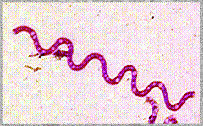


 email: jho@dres.dnd.ca
email: jho@dres.dnd.ca
![[DRES Logo with FLAPS title]](flaps.gif)
Our original prototype instrument was built on an optical bench using an APS and a HeCd laser (Flaps1). The combined setup was bulky, energy inefficient and thus could not be deployed as a mobile platform. Plans were formulated to downsize this to a form factor no larger than that of the commercial APS using off the shelf optical components available at that time. The resultant instrument called Flaps2 (keeping the nomenclature consistent with the 1st generation) made use of a frequency tripled 1.06 µm pulse laser, providing a useful wavelength of 349 nm effective for exciting biomolecules of interest. At about the same time, TSI was redesigning the APS optical system using a parabolic mirror to enhance light scatter signal capture. A matched mirror was used to capture fluorescence signals, providing improved signal to noise characteristics, especially for particles <1 µm. The final instrument has a configuration as shown in this optical diagram.
![[Optical diagram]](flp2pt.gif)
This improved layout configuration illustrates the advances that have been made since the original Flaps. As previously shown, the red CW laser provides a twin bean that measures time-of-flight of a particle, in this case traveling 90 degree incident to the diagram. This generates a timing event that is used to estimate aerodynamic particle size as well as triggering the pulse laser to fire. The exciting 349 nm beam is located a short distance down stream of the red light along the particle path. It was realised that particles of different sizes would arrive at the exciting beam at different times. An ingenious scheme was devised by TSI (skeet shooting algorithm) to calculate a timing delay for laser firing based on particle size. Large particles travel slowly thus require a longer delay.
![]() Engineering
and Manufacturing of Flaps2 was performed by TSI
Engineering
and Manufacturing of Flaps2 was performed by TSI
http://www.tsi.com
![]() 3D
Display Software was produced by Dycor
3D
Display Software was produced by Dycor
http://www.dycor.com
In measuring low fluorescence signals, noise can be attributed to a variety of sources. One major area is intrinsic or native fluorescence of commercial latex beads that are sold as regular or standard calibration applications. It is true that the vendors did not advertise these as "non-fluorescent" and in conventional work they do not cause problems. However, with the sensitivity of Flaps2 optical design, we found these beads to be unsatisfactory or unreliable for zero fluorescent calibration. It was assumed that NaCl particles produced by a TSI vibrating orifice generator (0.25 NaCl g/liter in 50% MeOH) would provide a reasonable starting point. The results shown here illustrate the effect of varying PMT voltages on noise levels in the FL channels.
The top figure shows an analysis of two NaCl particle size populations using PMT voltage of 500. No significant fluorescence signal was registered in the lower intensity channels. In contrast, raising PMT voltage to 600 (lower figure) resulted in the appearance of signals in the lower intensity channels (<10). The conclusion from this illustration is that if PMT voltage is kept below 600, then signals measured in channels >10 are free from most noise influence. In practice, biological aerosols are measured with PMT voltage set at 525-550.
In the laboratory, Flaps2 was presented with an aerosol of standard 1 µm fluorescent blue latex beads. The above figure shows a fluorescence intensity distribution in a narrow range approximating what was expected, indicating reasonable performance under the experimental conditions. In this case, the pulse laser power was set at 50% full power and the detector photomultiplier voltage was at a modest 450 volts. Using the NaCl data as fluorescence noise reference, it can be seen that in this test, the lower intensity channels provided useful information for resolving dimly fluorescing particles.
Using similar display software as shown for Flaps1 data presentation, we attempt to illustrate Flaps2 aerosol detection by animating the 3 second data slices as half second video playback loop. The experiment was done by aircraft dissemination of BG spore aerosol at 800 meter upwind of the detector. Initial display slices show background data followed by that of the leading edge of the aerosol cloud. After that, the major peak of the cloud can be seen as represented by high fluorescent particle numbers. Due to file size limitations, data display was truncated at this point and shown as a continous video loop.
![[bar graph]](pht22ani.gif)
The pulse laser has made it possible to reduce the size, weight and power requirement of Flaps2 to a practical level. In addition, we are able to, via software commands, selectively excite particles of certain size characteristics by triggering the laser only when specified conditions are met. This feature enhances performance of the instrument because it is possible to ignore background or environmental particles of less than 1 µm size range. From previous experiments, it has been determined that artificially generated biological aerosol particles are mostly >2 µm.
In these scored field trials held in Dugway, September 1996, Flaps2 has been shown to detected an aerosol containing as few as 10 live bacterial spore aggregates per liter (aka "ACPLA" in US terminology). This level of sensitivity approaches the "Holy Grail" of biological detection (data available by request).
![[FLAPS logo]](flaplogo.gif)
This neat logo looks really nice on a golf shirt.
Email hank@dycor.com for local Canadian and international enquiries.
![]() If
you have any comments or suggestions regarding the intellectual content
of this document, please send e-mail to jho@dres.dnd.ca.
If
you have any comments or suggestions regarding the intellectual content
of this document, please send e-mail to jho@dres.dnd.ca.
![]() If
you have any comments or suggestions regarding the design or layout of
this document, please send e-mail to webmaster@dres.dnd.ca.
If
you have any comments or suggestions regarding the design or layout of
this document, please send e-mail to webmaster@dres.dnd.ca.
![]()
![]()

 Back to Flow Cytometry and Microbiology Introductory Page
Back to Flow Cytometry and Microbiology Introductory Page
